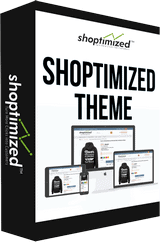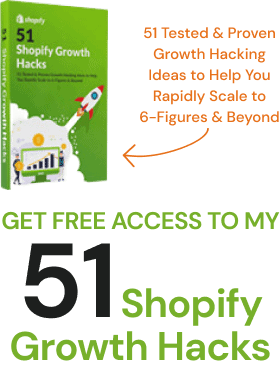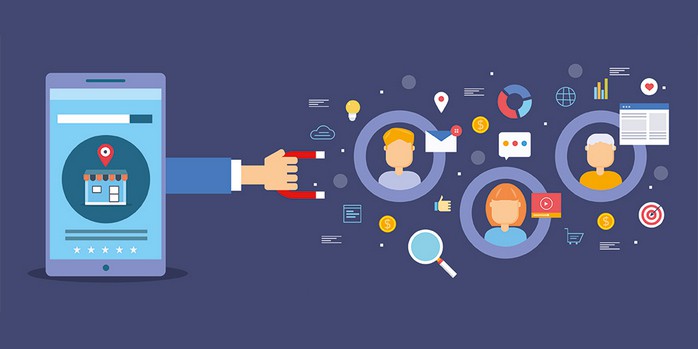
Customer acquisition is king in growth hacking your Shopify store. But what happens once a new customer has made their first purchase from you? Do you have a Shopify loyalty program to keep them there?
If you’re like a lot of Shopify store owners I’ve worked with, most were solely focused on front-end traffic as well as bringing in new customers.
They were too busy to focus any attention on maximizing the goldmine they already had hidden in plain sight…
The lifetime customer value of the customers they’ve already got.
If new customer acquisition has been your sole focus until now, it’ll be shocking to learn this:
It costs roughly 5-25X more to bring in a new customer than it does to sell to an existing one.Not only that, but existing customers spend 67% more than new customers. In fact, a Bain & Company report found something unnerving.
They found that acquiring a new customer costs six to seven times more than keeping an existing one.
And more. Businesses that boosted customer retention rates by as little as 5% saw a lift in their profits. From 5% to a staggering 95%!
82% of U.S. adults say they’re loyal to brands. So it makes sense to shift some of your attention elsewhere.
Retaining and Nurturing your Existing Customers.
So, turning your existing customers into long-term repeat customers is key. It can be the most cost-effective way to growth hack your business.
It stands to reason that building out a Shopify loyalty program will pay for itself over and over.
But how do you create a solid Shopify loyalty program? One that engages your customers and builds brand loyalty?
Well, the secret to thriving loyalty programs was recently uncovered by professors Joseph Nunes and Xavier Dreze.
Their study, “The Endowed Progress Effect”, saw how false gain affects buyer motive. When it comes to loyalty programs.
The Endowed Progress Effect
The experiment was at a car wash where the professors handed out 300 loyalty cards. Each time a customer got a car wash they’d receive a stamp on their loyalty card. With all the empty spots stamped, they could redeem a free car wash.
But they were clever. They handed out two different kinds of cards.
The first group received cards that had eight available slots.
The other group had ten slots but with two already stamped. The pre-stamped slots were a “free bonus” to the recipients.
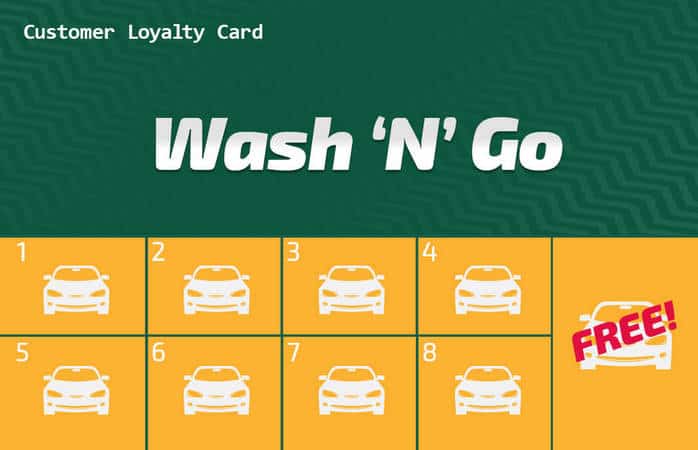
Both groups needed to get the same number of stamps (eight).
But this is what is interesting. The second group (pre-stamped) had almost double the rate of loyalty card completion.
34% vs 19%. Why?
The second group had a two-slot head start. The professors concluded was enough of a “leg-up” to motivate them to complete the card.
In their minds, they had already overcome the greatest mental hurdle – getting started.
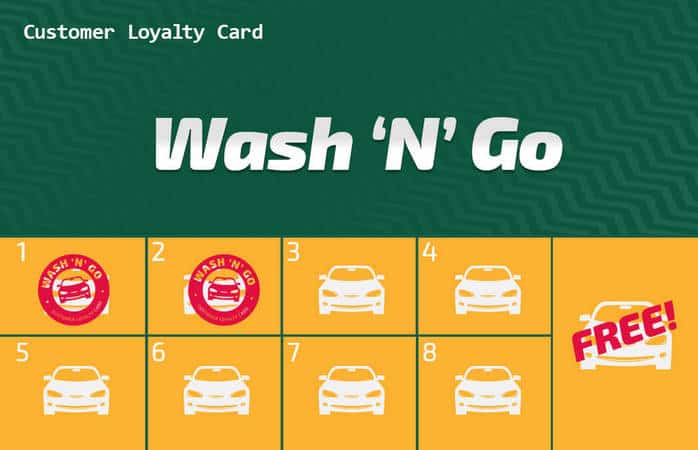
Getting Started
I would also suggest that the law of reciprocity plays a part here.
The second group felt they needed to repay the kindness of the two free stamps.
The psychological principle of commitment and consistency also plays a part here. The two bonus stamps made customers feel like they needed to finish what had already begun.
So what does this research tell us about how when we alter loyalty programs, we improve responses?
- Have a clear goal. Have a goal that is achievable and aligned with the customers’ desires. Unless there is a finish line in sight, they won’t motivate themselves enough to see it through.
- Decide what customers should do to progress. This is where many e-commerce stores get it wrong because they try to overcomplicate things. For the most part, buying should be the only rewarded behavior. Rewarding social sharing with a monetary discount, not loyalty points.
- Pitch false gain as a bonus. Dreze and Nunes’ study revealed that false gain only works if there’s a key component. A valid reason why people were receiving said unexpected leg-up. If points were being handed out without the claim of it as a bonus, it would fail. Your reasons for accumulation can be simple, like a new customer bonus. But it is important to communicate why you’re giving away the bonus points.
So how can you create an effective Shopify loyalty program in your Shopify store? Here are 3 of the easiest ways:
1. Reward with a Simple Points System
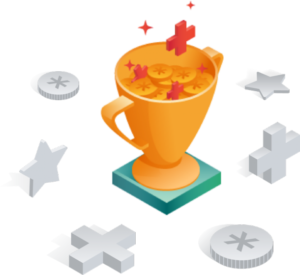
The points system is the simplest way to reward your customers. This is because it’s based on a simple principle – spend more to get more.
Every time a customer buys from your store, they get points with the amount they have spent.
There’s an important thing to remember here. Make the point system super easy for customers.
Make it easy to understand and calculate. Spare them the mental arithmetic.
Keep it simple so they earn one point for every $1 or $10 they spend, for example.
This way customers can understand how it works straight away. They can tell whether it’s worth taking part in the Shopify loyalty program.
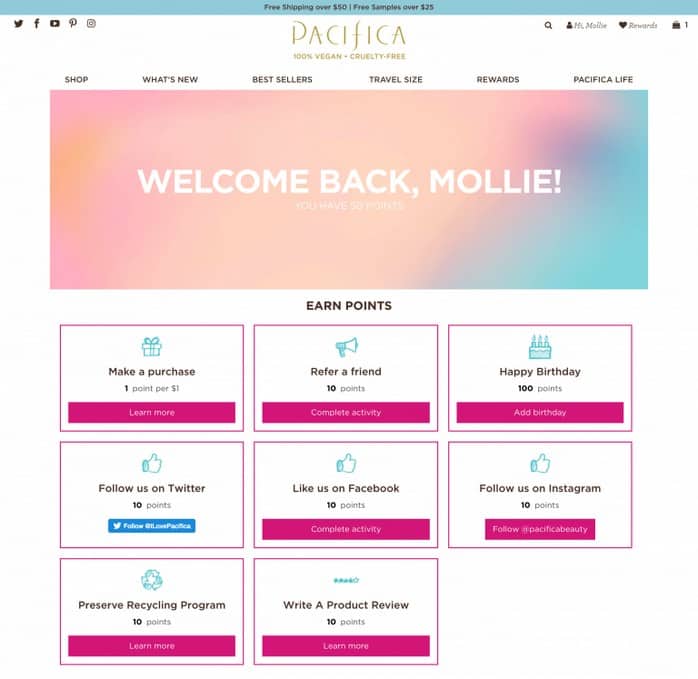
Pacifica Beauty is a great example of an easy-to-use and navigable loyalty page. Their aptly named program, “Girl Code Points”, mixes easily with the look and feel of the site.
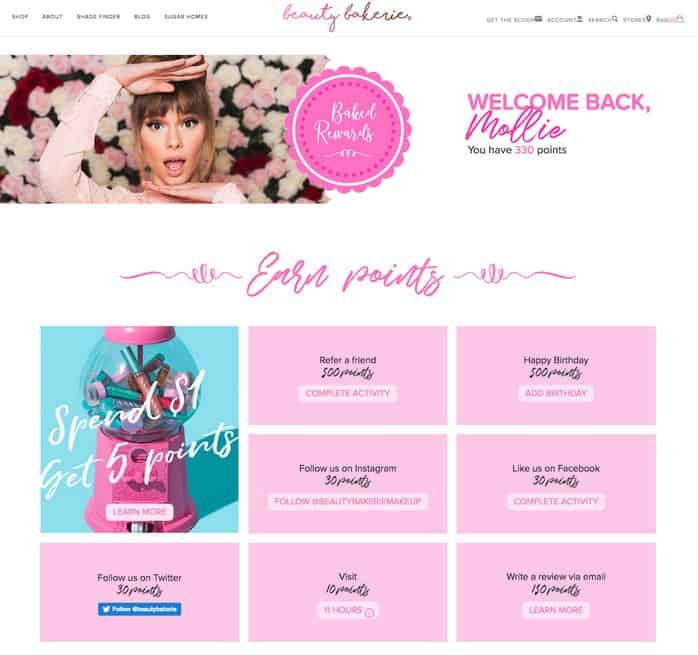
At Beauty Bakerie, new users who sign up for the loyalty program are directly shown more ways to score points before they see the rest of the site.
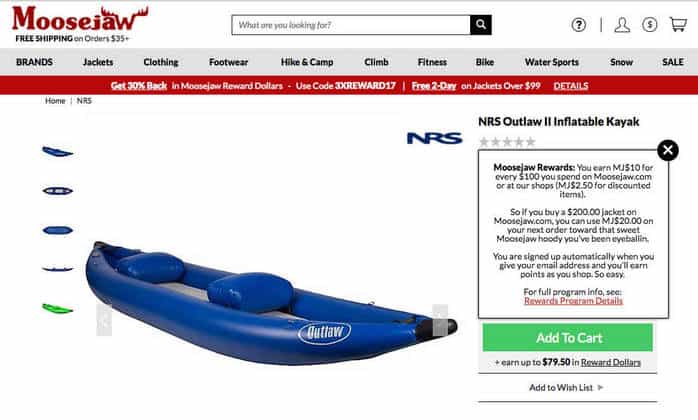
Moosejaw is one of the best examples of a points-based system. Every $10 dollar spent earns the customer 1 MJ$. Moosejaw understands its audience by measuring points in dollars.
They reward customers with MJ dollars. They can spend MJ dollars on more of the stuff they love (not random, unrelated free gifts that may not be desirable).
2. Tiered Rewards
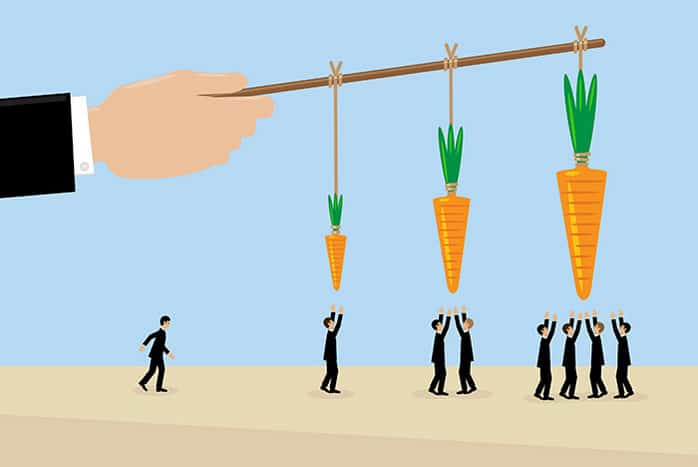
Finding the right balance between attainable and desirable rewards. This is the challenge for most e-commerce loyalty programs.
A tiered system is a good way to reward your customers for their initial loyalty. And encourages more purchases.
This works by offering small rewards as an entry point for being part of the program.
Then, repeat incentivized purchases increase. Also, the value of the rewards increases as the customer climbs up the loyalty ladder.
This helps solve the problem of members forgetting to redeem their points. Otherwise, the time between buying and gratification is too long.
Difference Between the simple Points System and a Tiered System?
Customers extract short-term versus long-term value from the loyalty program.
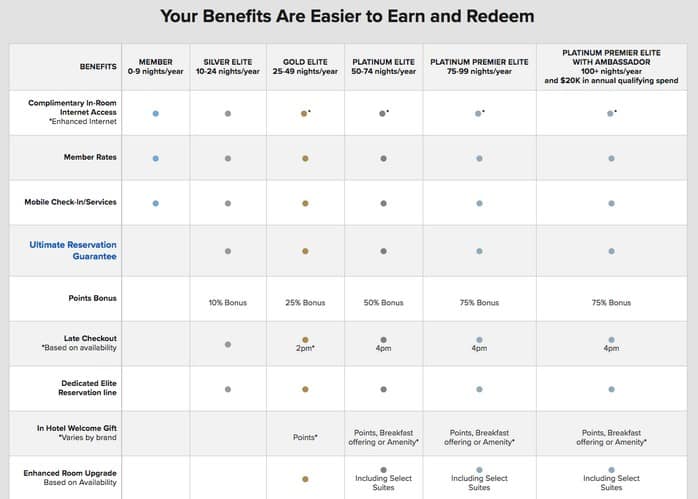
Marriott has their reward tiers laid out very clearly on their website and offers beneficial bonuses in higher tiers to urge people to stay loyal.
From a psychological perspective, peer approval plays a part here. Winning your top-tier status is a status symbol by your most loyal customers.

Lucy & Yak have used their loyalty tiers in a smart way.
Named “Comfort Lover”, “Yak Enthusiast” and “Dungaree Devotee”. A funny and light-hearted add to their brand. They also have a label to show which tier a customer currently is in.
Sephora’s Beauty Insider program helped mold them into one of the most steady retail brands.
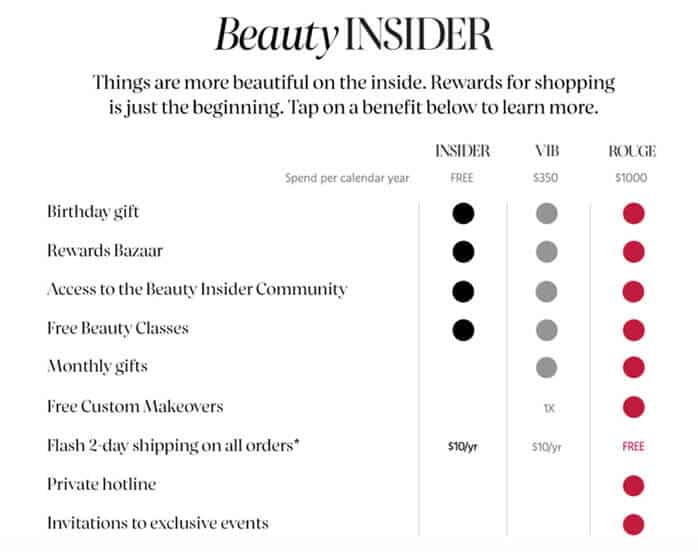
Sephora’s tiered loyalty program creates a desire for achieving top-tier status.
Also, Starbucks is one of the biggest examples of a loyalty program with gamification.
Smile.io says it best “Presenting VIP tiers as elements customers need to unlock adds an additional layer of motivation to your rewards program.”
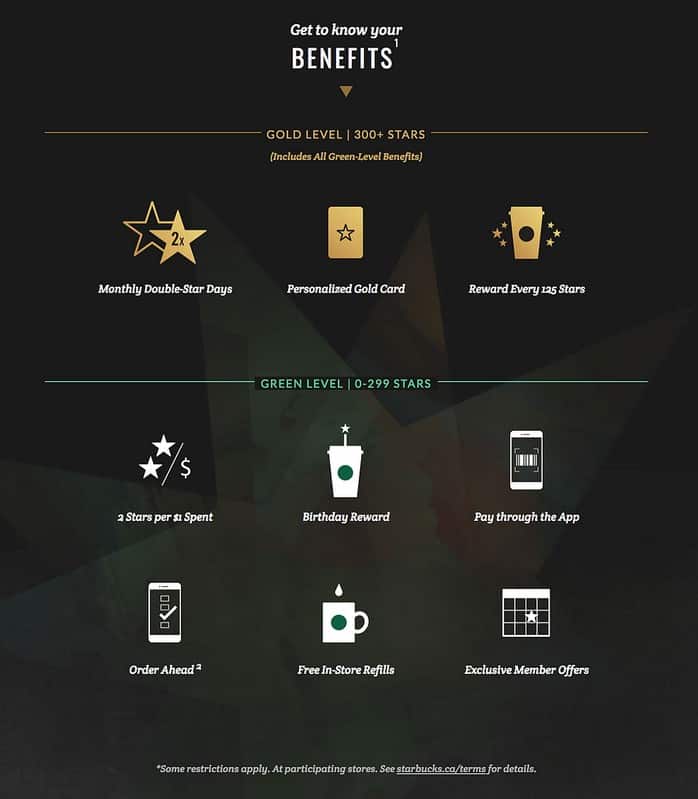
Here is a brand that knows what its customers want, Starbucks. With cool perks like jumping the line, free refills, point-multiplier days, and birthday gifts.
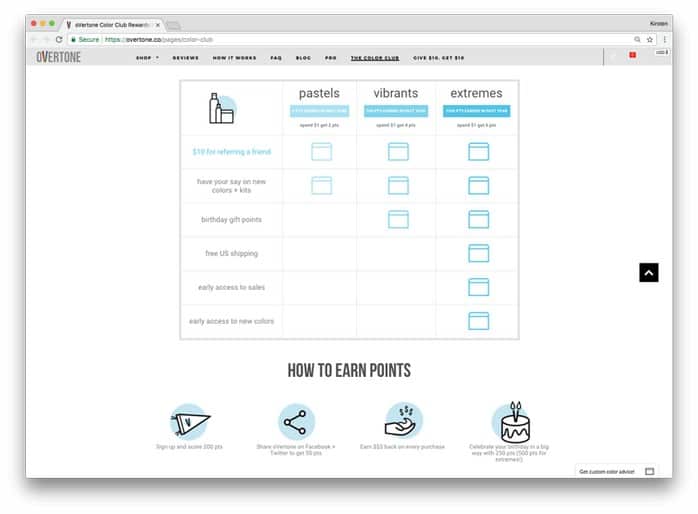
oVertone is an example of another great brand that makes it easy and clear to see the rewards of being a loyal customer. They show multiple ways of how customers can earn points to be at a higher tier.
3. A Value-Based Loyalty Program

Understanding your customers on a true level is paramount to keep you in their “good graces.” While you grow and expand.
This means having an understanding of what they value the most. And you only need to look at Apple to see that shared values have a huge impact on if a customer will be loyal to a brand.
Apple customers are faithful to Apple’s beliefs. Apple is synonymous with creating simple but effective products that look beautiful.
In fact, a survey by CeB revealed that customers were loyal “not to companies, but to beliefs.”
This is huge if you think they’re in love with your brand. Brands remain. But if consumers feel your beliefs and values have changed, you may lose them.
This depends on your niche. But your customers may, in fact, get more value in non-monetary or discounted rewards.
Here’s the thing. Any store can offer discounts and coupon codes. But stores that can provide value to the customer.
Value to the Customer
Value, in ways other than cash. Those stores have a unique opportunity to connect with their audience.
TOMS Shoes is a great example of this. The scheme started with TOMS donating a pair of shoes to a child in need for every pair purchased.
But it’s since grown to help provide clean water access and improving maternal health care.
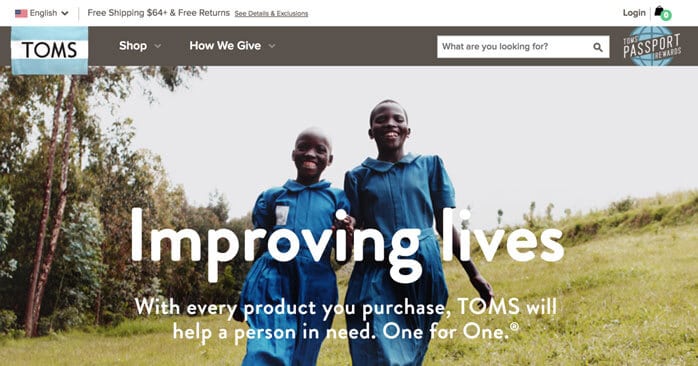
With Swell, a Shopify Loyalty App, you can use VIP tiers and gamification systems. These help to build exclusivity and create more high-performing buyers.
Getting a Shopify loyalty program up and running is easy with the best Shopify loyalty app, Swell. So, go get it done?
As a bonus, here are some other Shopify loyalty apps to try out:
Loyalty & rewards program by LoyaltyLion
Shopify Loyalty Programs Can Only Help If You Do This…
Why are your customers sticking around in the first place?
To shop at your store…
But they’ll only buy if you give them a reason to.
That’s why we made the Shoptimized™ Theme, the fastest and best converting Shopify theme.

